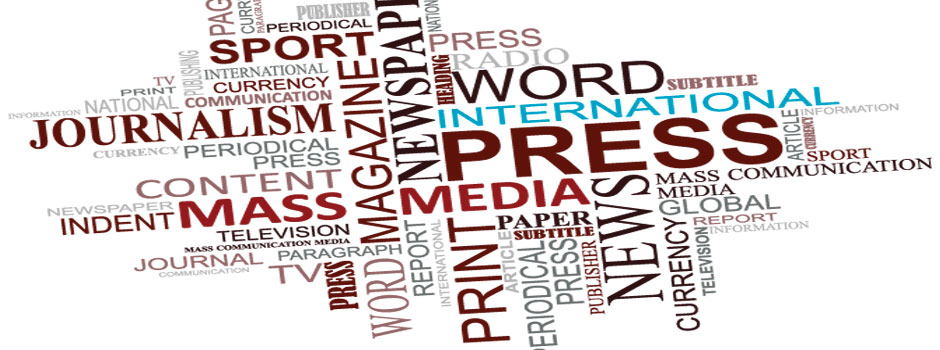WHEN YOU SPEAK THE SAME LANGUAGE, YOU CAN SHARE EXPERTISE
THE LANGUAGE OF FORMATTING
Article (“paper”, “copy”): text written for publication.
Angle: the way in which a subject is approached.
Lead: the first sentence or the first few words, designed to grab the reader’s attention.
Body: the text of an article, set of inner pages, the size of a character.
Final sentence: the conclusion of the article, the last sentence, the last few words.
THE LANGUAGE OF STYLE
Opinion piece: a short article in which the writer sets out their opinion.
Short news item: a very concise piece of news without a headline.
Bulletin: an unsigned commentary stating the newspaper’s stance.
Human interest: a heading for miscellaneous events
Column: a regular article by an author, written in an original style.
Correspondence: an article submitted by a press correspondent.
Wire story: information sent by a news agency.
Gossip: a short piece of social news.
Editorial: a commentary written by the director or the editor-in-chief of the newspaper, a reporter from the newsroom or sometimes a media personality.
Investigation: the exposé, analysis and deciphering of information obtained through various channels.
Box: a short paragraph inserted into the body of the text between two lines to grab the reader’s attention.
Interview: an account detailing an interview, reported in question-and-answer format.
Seasonal article: a regular article addressing a single subject.
Obituary: a post-mortem report.
Report: a story and testimony of what has been seen and heard in the field.
Advertorial: an advertisement presented as a report.
Scoop: exclusive, groundbreaking news.
THE LANGUAGE OF EDITING
Kicker: a short piece of text introducing and summarising an article.
Headings: all of the elements making up a headline.
Headline: the main text of the title.
Sub-heading: supplements or extends the headline.
Inter: an intermediate title positioned within the text.
Byline: the name and surname of the author presented as a header or a footer, in full or as initials…
Caption: the text accompanying an illustration.
Photo credit: the name of the photographer.
THE LANGUAGE OF PROOFREADING
Omission: one or several words missing from an article.
Typo: a typographical error.
Repetition: a typographical error resulting in the repetition of a word, line, sentence, etc.
Transposition: inverting or mixing up typographical characters.
Character: the smallest unit used for measuring copy; the number of characters in an article is the number of characters used including spaces.
THE LANGUAGE OF FORMATTING
Full-height column: text presented in a single column without intermediate headings.
Box: text surrounded by a border.
Border: a solid or dotted line used to create boxes or to separate articles or columns.
Footer: the bottom of the page.
Mast: the editorial section.
Header: the top of the page.
Jump: the continuation of an article from the front page on an inside page.
Body: the middle of the page
THE LANGUAGE OF THE “WINDOW”
Teaser: announcement on the front page of an article published inside.
Flag: the top of the page featuring, on the first page, the title of the publication, and, on the inside pages, the name of the section, the date and the folio.
Lede: an article on the front page that runs over onto the inside pages.
Banner: the very large headline across the top of the first page.
Ears: the spaces located on either side of the masthead.
Bottom bar: the banner at the bottom of the page.
THE LANGUAGE OF PRODUCTION
Putting to bed: the final approval of the pages before printing.
Wrapping up: the final formatting of a page before “putting it to bed”.
Calibration: the estimated length of a text.
Flatplan: an overview of the entire publication, showing the positioning of articles and advertisements on a page-by-page basis.
Full dummy: all of the made-up pages.
L.H. (“Last Hour”): the last page of the newspaper.
Proof: a printed version of a composite article.
Sheet: the largest unit used for measuring copy; the sheet comprises 25 lines of 60 characters, including spaces, i.e. 1500 characters.
Folio: the page number.
Dummy: a mock-up of a page or the entire newspaper.
Reserve: a set of reserve articles.
Menu: a list of the articles put forward or retained or a list of the pages to be completed.
Layout: the placement of headlines, text, illustrations and page borders in the order set out in the dummy.
Make-up: the arrangement of texts and photos on a page.
Credits: a box containing legal information concerning the ownership and organisation of a newspaper.
Hot pages: pages dedicated to breaking news
Cold pages: pages prepared in advance.
Contents: a summary of the contents of a newspaper.
THE LANGUAGE OF PROHIBITION
No “spreading”: refrain from writing texts as if you are spreading jam on toast…
No “padding”: do not take 100 lines to say something that could be said in 50.
Never make things up: for a journalist, faking facts is the lowest of the low.

